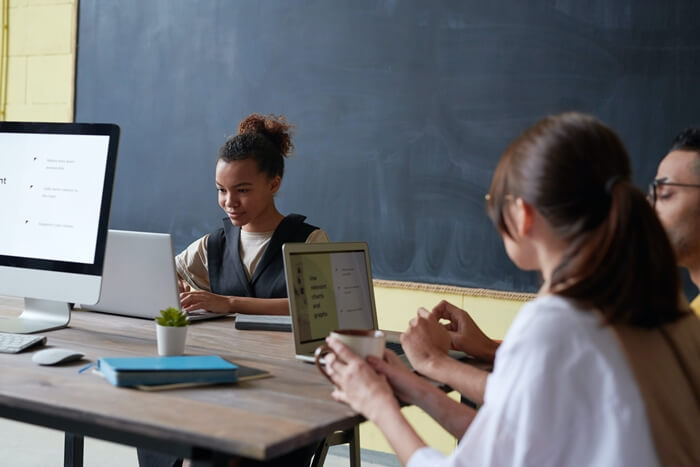In the evolving landscape of education, the integration of technology within the CBSE (Central Board of Secondary Education) curriculum in India has marked a significant shift towards modernized and interactive learning. This integration aims to make education more relatable, engaging, and effective for students in a rapidly advancing digital world. Digital Classrooms: The New Age...
BlogTechnology Integration in the CBSE Curriculum – A Leap Towards Enhanced Learning

In the evolving landscape of education, the integration of technology within the CBSE (Central Board of Secondary Education) curriculum in India has marked a significant shift towards modernized and interactive learning. This integration aims to make education more relatable, engaging, and effective for students in a rapidly advancing digital world.
Digital Classrooms: The New Age Learning Spaces
- Interactive Whiteboards and Projectors: Gone are the days of chalk and talk. CBSE schools now widely use interactive whiteboards, allowing teachers to deliver dynamic and multimedia-based lessons which are more engaging than traditional methods.
- Educational Software and Simulations: These tools enable students to visualize complex concepts, particularly in subjects like science and mathematics, making abstract ideas more tangible and understandable.
E-Learning Resources: Anytime, Anywhere Learning
- NCERT’s E-Content: The National Council of Educational Research and Training (NCERT), a key contributor to CBSE’s curriculum, provides extensive e-content. This includes digital textbooks, interactive exercises, and assessment tools, accessible through dedicated platforms like ePathshala.
- Online Libraries and Journals: These resources provide students with a vast array of reading material and research papers, fostering a habit of self-study and in-depth exploration of subjects.
Leveraging Learning Management Systems (LMS)
- Virtual Classrooms: Many CBSE schools have adopted LMS platforms that allow for virtual classrooms. This not only facilitates remote learning but also supports a flipped classroom model where students can learn at their own pace.
- Tracking Academic Progress: LMS platforms offer tools for teachers to track and evaluate the progress of students through regular assessments and feedback mechanisms.
Programming and Coding in Curriculum
Recognizing the importance of computational skills, CBSE has introduced basic programming and computer science from an early age. This initiative nurtures problem-solving skills and logical thinking, preparing students for future technological challenges and opportunities.
Challenges and Opportunities in Technology Integration
While technology integration offers numerous benefits, it is not without challenges:
- Digital Divide: There remains a gap in access to technology, especially in rural or less affluent areas, which can lead to disparities in educational opportunities.
- Teacher Training: Effective integration requires teachers to be well-versed in technology, demanding ongoing training and development programs.
Looking Ahead: The Future of Technology in Education
The future of technology in education, particularly within the CBSE curriculum, seems promising:
- AI and Personalized Learning: Artificial Intelligence (AI) could provide personalized learning experiences, catering to the individual strengths and weaknesses of students.
- Virtual Reality (VR) and Augmented Reality (AR): These technologies could revolutionize the way subjects like history and geography are taught, offering immersive learning experiences.
The integration of technology into the CBSE curriculum is a progressive step towards an education system that is aligned with the digital era. It has the potential to transform traditional learning methodologies, making education more interactive, accessible, and effective. The ongoing challenge will be to ensure equitable access and effective implementation across all strata of society, ensuring that every student benefits from these technological advancements.